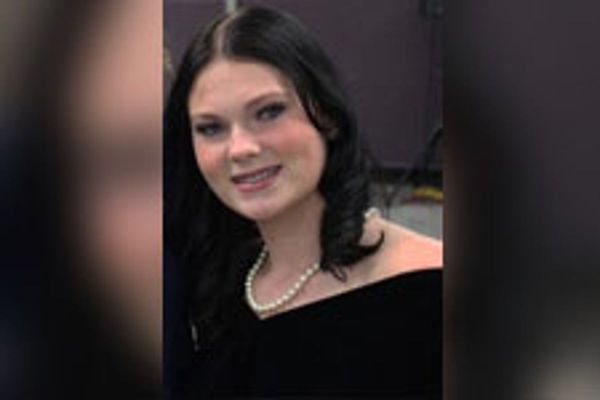
After Rayman 2's launch in 1999, its creator Michel Ancel deeply wanted some change from the series that made him one of the most acclaimed game designers in the industry. He gathered a team in Montpellier, France, to start his new project. Jean-François Le Quéré joined this team in July 2000 as a level designer after passing a few tests and an interview with Michel. Beyond Good & Evil was his first professional experience in the industry. "Videogames schools didn't exist at the time, so the team was made of passionate people coming from diverse environments," he tells us. "Each of them could bring their own background and references to enrich the game, making it a very varied experience."
Thus, variety became Beyond Good & Evil's main characteristic. Variety in terms of gameplay mechanics, considering that stealth and fighting phases alternate with hovercraft races and animal shooting sessions thanks to Jade's handy camera. There's also variety in terms of level design, with Beyond Good & Evil offering open-world features you can access with air or land vehicles, while memorable puzzle-solving moments are found in its dungeons. The latter provide a distinct Legend Of Zelda flavour, which is not surprising, considering, "Everyone in the studio was very fond of Shigeru Miyamoto's productions, starting with me," admits Jean-François. "Also, Jacques Exertier, who wrote Beyond Good & Evil's story with Michel Ancel, loved to organise live treasure hunts with the team, sometimes lasting several days. You can find this mix of exploration, observation and puzzles to solve in the game."
The Beyond Good & Evil development team also counts Hayao Miyazaki, cofounder of Studio Ghibli, among its other influences and inspirations. Florent Sacré joined the team at the beginning of 2001 as a 2D/3D graphic designer, when the team consisted of between 20 to 30 people. He mostly designed vehicles, settings and materials for the game, while Alexandra Ancel, Michel's wife, was handling character design.
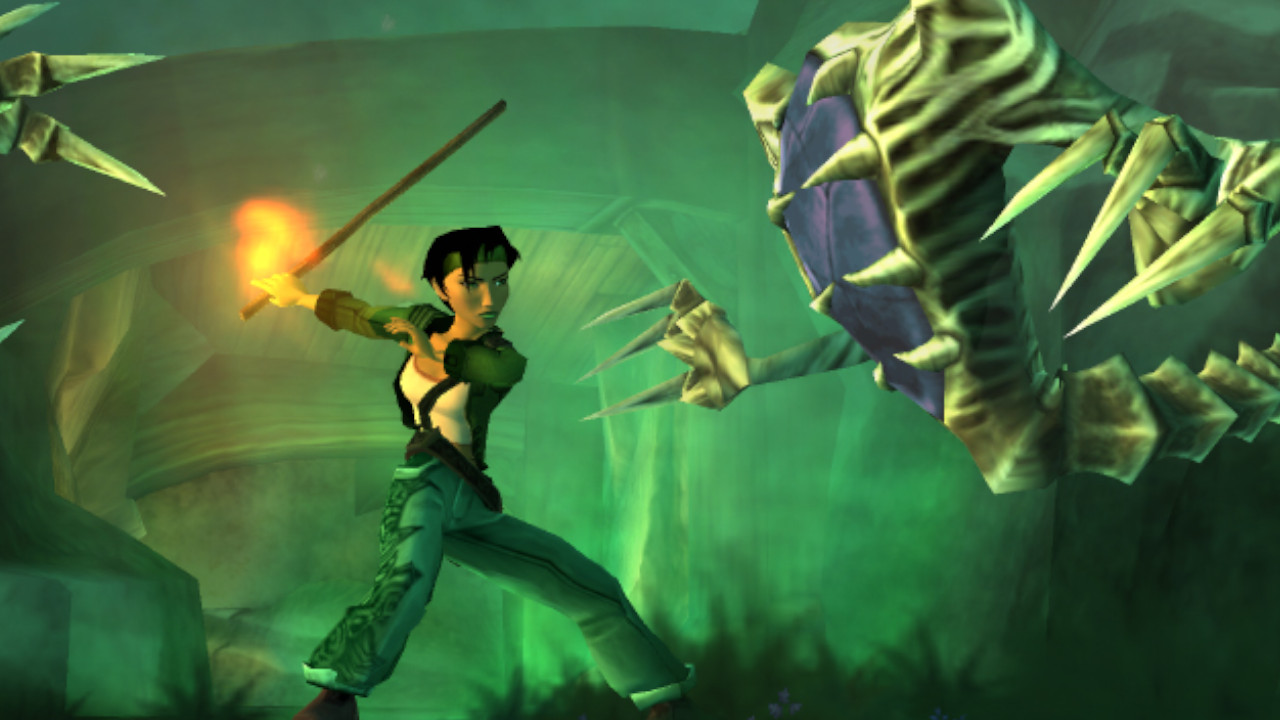
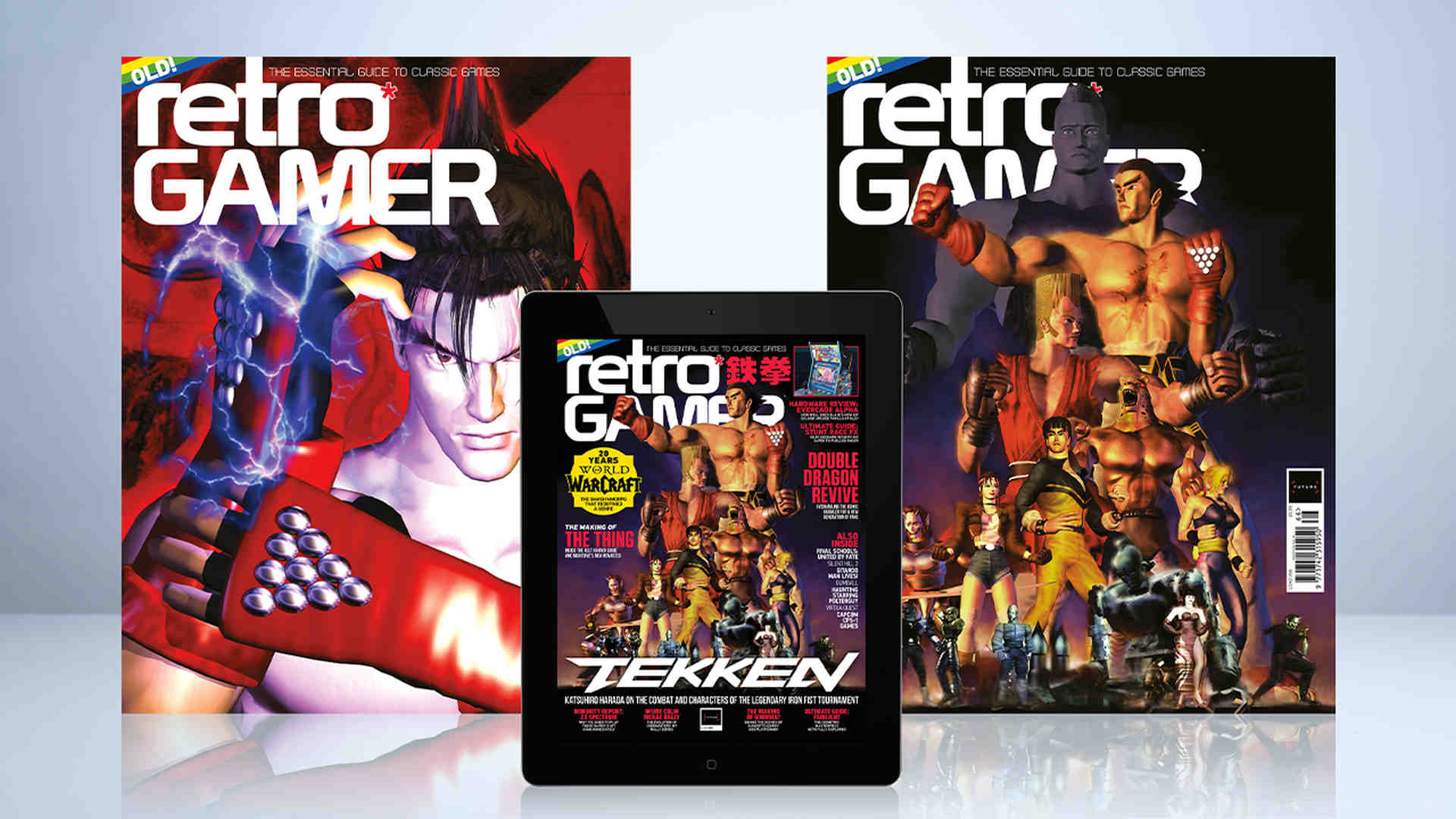
This feature originally appeared in Retro Gamer magazine. For more in-depth features and interviews on classic games delivered to your door or digital device, subscribe to Retro Gamer or buy an issue!
As the game's development evolved, Florent ended up taking on the role of lead artist. "Visually speaking, Beyond Good & Evil's influence is 2000% Miyazaki," he explains. "We were fascinated by what was considered exotic at the time. Hayao Miyazaki wasn't as popular in the West then as he is now. Many team members were also sensitive to the French and Belgian bande dessinée production and Disney's. But Miyazaki remains the biggest poetic inspiration." An iconic Japanese game also proved to be important to Beyond Good & Evil's evolution, with Jean-François telling us, "Ico was also one of our influences. We loved Fumito Ueda's videogame and Michel and Jacques wanted Beyond Good & Evil's players to feel the same strong relationship between that game's characters."
Being clearly considered as an invitation to dream and travel, Ubisoft Montpellier's game needed a music composer with very eclectic, international tastes. Christophe Héral was an ideal choice. "I am a composer who loves musical instruments," we're told. "Wherever I travel I can't help bringing back an instrument with me. These can be quite large. In this case I just buy more airplane tickets. I joined the team in 1999. Michel Ancel was looking for someone who didn't come from the videogame industry, without particular knowledge about game mechanics. Someone who would come from documentary or linear narrative production. Beyond Good & Evil was meant to be a game for adults, dealing with topics like genetic manipulation to become immortal, which was what the DomZ were trying to achieve. But Jade herself uses a camera as a documentation tool, not a gun. I think there might have been some kind of link."
Being clearly considered as an invitation to dream and travel, Ubisoft Montpellier's game needed a music composer with very eclectic, international tastes. Christophe Héral was an ideal choice. "I am a composer who loves musical instruments," we're told. "Wherever I travel I can't help bringing back an instrument with me. These can be quite large. In this case I just buy more airplane tickets. I joined the team in 1999. Michel Ancel was looking for someone who didn't come from the videogame industry, without particular knowledge about game mechanics. Someone who would come from documentary or linear narrative production. Beyond Good & Evil was meant to be a game for adults, dealing with topics like genetic manipulation to become immortal, which was what the DomZ were trying to achieve. But Jade herself uses a camera as a documentation tool, not a gun. I think there might have been some kind of link."
Beyond beats
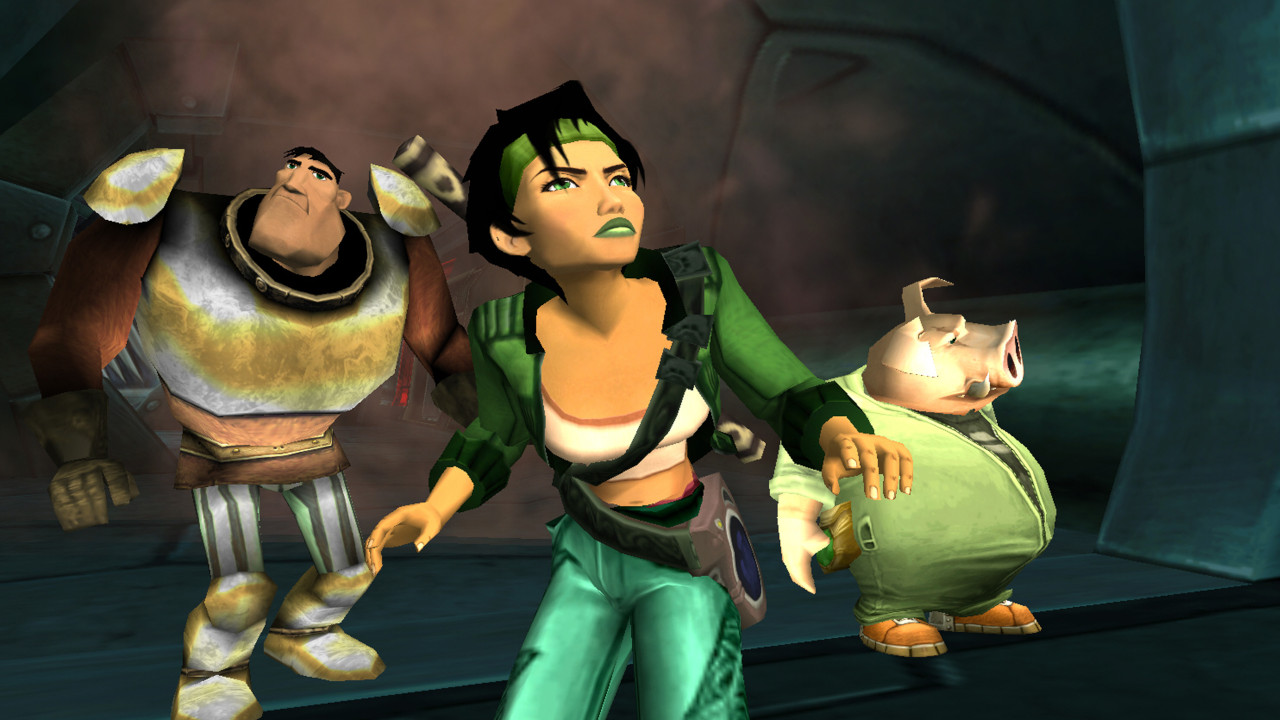
Thus, Beyond Good & Evil's soundtrack became diverse, playing sounds and music coming from all over the world: Latino during a few hovercraft races, reggae whenever Jade pays a visit to Mammago Island, as well as Asian and Indian themes. "There isn't really any logic. Except for Mammago Island, obviously, populated by rhinos wearing Rasta hats. We had to record the echoing sounds created on a neighbour's anvil," explains Christophe. "We added music coming from an instrument found when travelling, some Indian instrument designed for tourists and sold at the airport! There are Arabic musical extracts when Jade wanders around the city. I am Mediterranean and I like Arabic and Andalusian music. On top of this extract I added my voice singing what I believe was Bulgarian or maybe Croatian words. I have no idea what these words meant but I found it interesting. I could say the same about the Hispanic track, where you can hear fictional Spanish words, just for fun. Beyond Good & Evil is multicultural," adds Christophe, "and gives a feeling you get when you walk around a city in the Blade Runner film, populated with people from a variety of different backgrounds."
Coming from the cinema industry, Christophe had a strong experience with sound effects. He even worked on the sound of an animated short film that won the Palme d'Or at the Cannes festival. "For the warehouse location in the game, we created a cinematographic atmosphere as much as we could. It was a way to differentiate Beyond Good & Evil from other productions at the time. Today, cinematographic methodology is the norm in the industry. For an anecdote, Medusas' noises were created out of squeezed dog food. I unfortunately dropped some on my trousers and had to wash them before they would get punctured. Our techniques came from cinema and animation because it was the sound culture I had."
While Christophe was tackling the game's eclectic soundtrack, Florent worked on designing the city. "Michel gave me guidelines to follow but I couldn't understand them so I went beyond these guidelines, keeping Michel's wishes and level design constraints in mind," he explains. "I then started creating a rush with a little bit of Italy, a little bit of everything I liked. It took a month to create." Despite the short timeframe, it wasn't straightforward. "There were many constraints on developing the city," continues Florent. "We wanted it to be epic and majestic but we could hardly use anything to do so; we only had tiny textures, for instance. It was extremely hard to create and we struggled to optimise it. I think moving around in the city required several loading times, because there were so many things to display on the screen. When you're on your PC and your work doesn't fit because there is new gameplay added or the main character has to cross another zone from the city, so you have to add another exit, another part of the city, initial constraints end up breaking. So everything has to be re-optimised, you need to get rid of some textures, rationalise what has already been done to find new ways or discard entire zones because it was too wide."
Powered by Jade
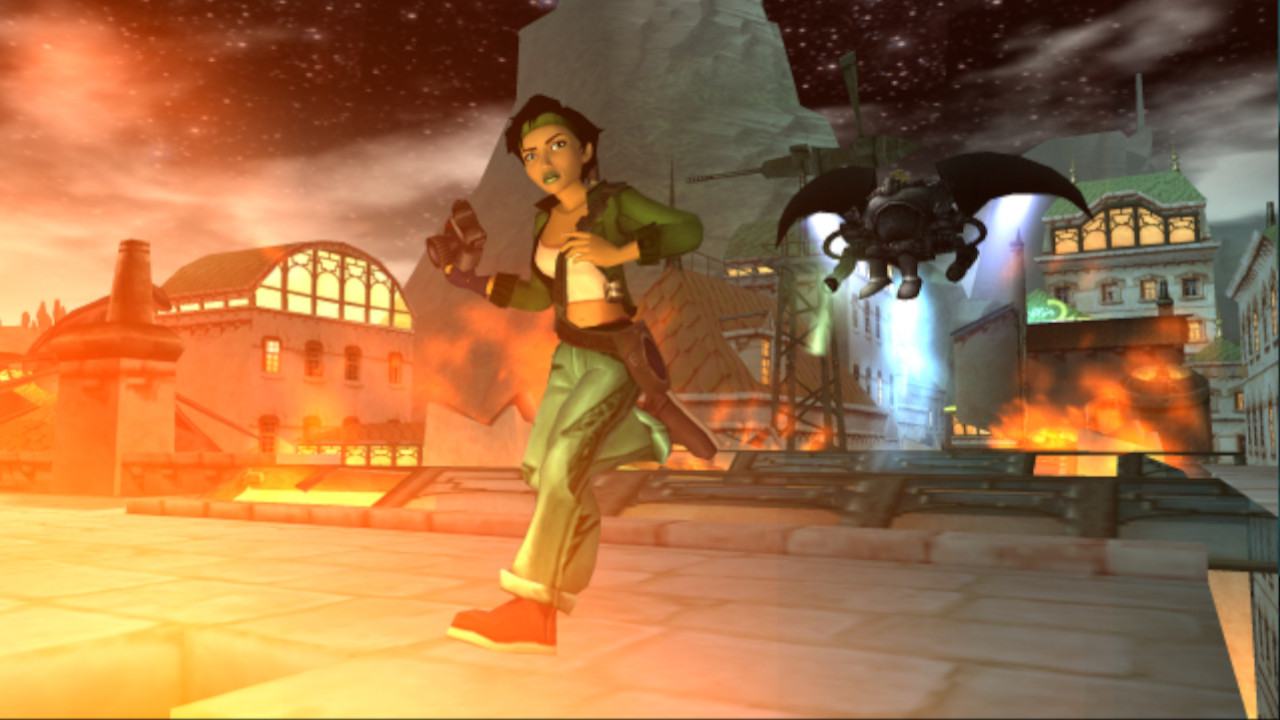
Beyond Good & Evil was powered by the Jade Engine, the development of which progressed as the game itself was being created. "Benefits and drawbacks of using such an engine were actually the same," explains Florent. "Engineers were always on the alert, especially those who were taking care of the tools. It was advantageous since every time we needed something, someone was here to listen to us to make the tools evolve exactly as we wanted. The small team was getting along very well, and we hardly needed to speak to understand each other, experiencing some kind of organic fluency. On the other hand, since the engine was evolving, we had to face many issues, that we had to compensate one way or the other. We didn't have any means to stand back from the engine, as no production had ever been made out of it."
Jean-François had several tasks to perform, since there were only three level designers and a lead to develop the entire game. "We all worked on the dungeons but I particularly took care of Hillys, the hovercraft races, chases and some of the phases on the moon and on the satellite," he tells us. "We also prototyped a lot of stealth phases. Ubisoft Casablanca helped enrich the project by creating many chase and stealth phases. I am very proud of the rooftops chase: we wanted a very spectacular sequence, with many explosions everywhere, in Michael Bay's film style, for the game's advertisement, among other things. Here is a little secret I can share: this sequence is inspired by The Matrix and I invite anyone interested to compare this chase sequence with the beginning of the film."
For better or worse, Beyond Good & Evil wouldn't be Beyond Good & Evil without its numerous scripted stealth sections. "We wanted the game to be accessible to everyone, but to be completely honest, I think that this was the first game developed by our team members offering this type of stealth [mechanic], so we prototyped a lot and adapted the situations to the game's humour and background," explains Jean-François. "These phases are actually designed as puzzles to solve. Maybe this is why they were so scripted."
A matter of scale
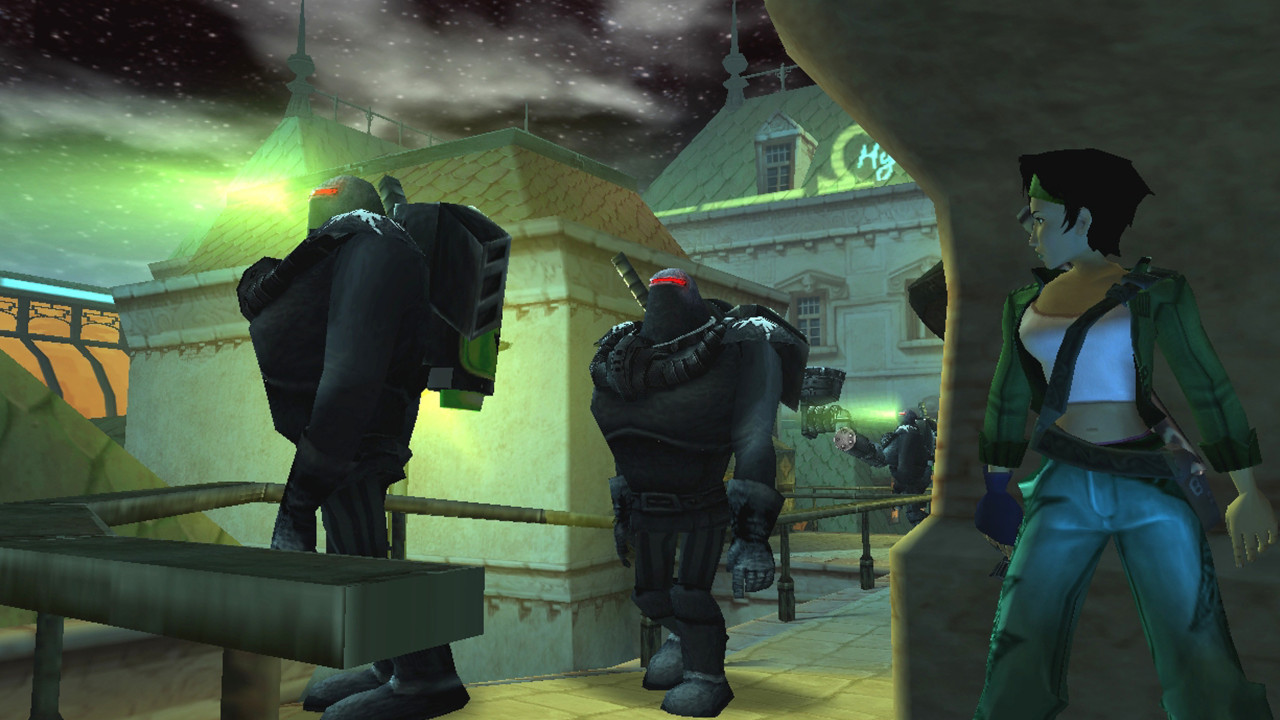
"The space exploration phase also had to be scaled down. Michel wanted to develop this aspect for Beyond Good & Evil 2."
If the stealth sections divided opinion, the same couldn't be said for the ambitious overworld which featured some impressive effects, particularly the final rendering of Hillys' ocean. "This was Philippe Vimont's job," Florent explains. "As an engineer on the project, he pushed the boundaries as far as possible. There was good communication with the art team, and we were lucky enough to have engineers in the team with a great artistic sensitivity. They had enough skill to perceive all the indicators to know what path to take to satisfy our constraints. Peter Jackson's King Kong videogame had actually been developed with the same team. The forest in [that] game was very impressive at the time as well."
For all the critical acclaim it would receive, Jean-François admits there were many hardships to overcome during development of Beyond Good & Evil. "My biggest challenge was creating Hillys at the right scale," he admits. "My first version was at the hovercraft's scale; I took into consideration its speed. One day, Michel asked to put Jade 'on' the hovercraft to check on the scale ratio and we realised Hillys was huge. I spent some time resizing Hillys to the right scale. We also had to stop developing entire parts of the game: the satellite, for instance, was supposed to be a full dungeon originally.
Coming back from E3, Michel took the decision to modify the entire graphics part of Beyond Good & Evil, including the characters. Jade notably changed her appearance. He believed that [the game] didn't enter the graphical trend of the games to be released. This decision had been taken six months before launch, and it impacted all the work done on dungeons that had been created but not designed graphically. Thus, you can't find them in the released version of the game. The space exploration phase also had to be scaled down. Michel wanted to develop this aspect for Beyond Good & Evil 2."
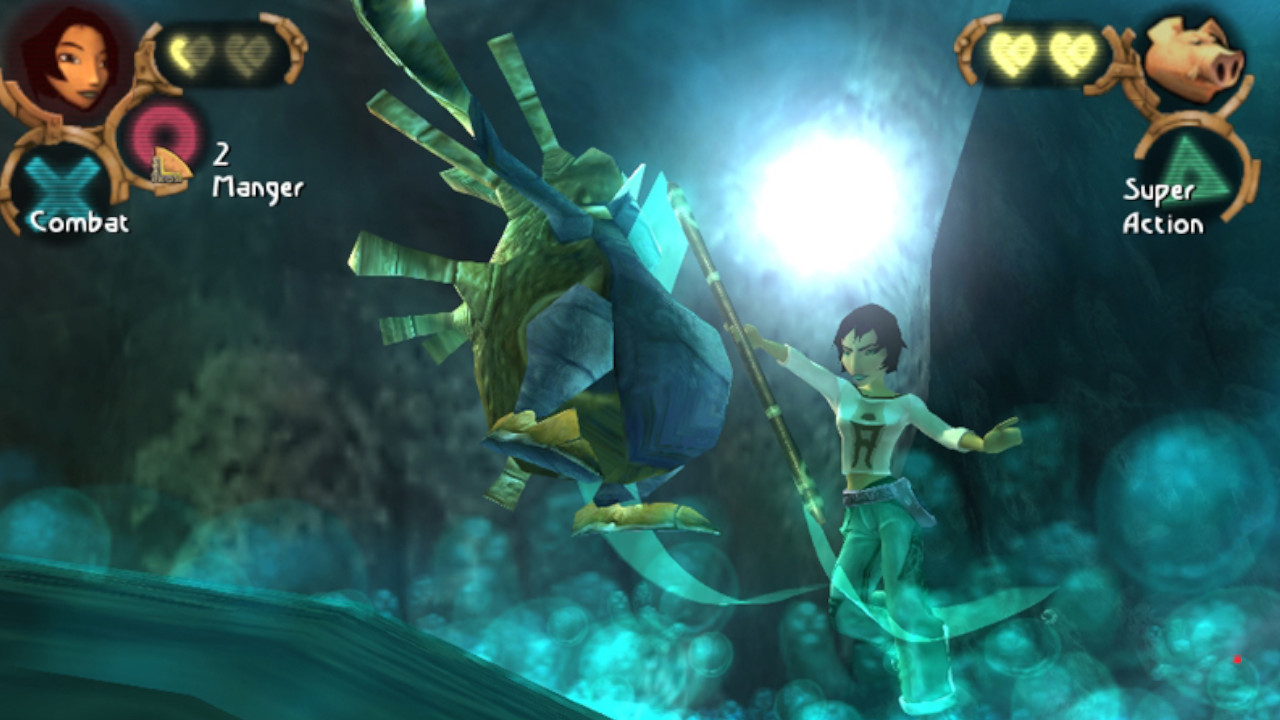
A real-life flood also played a part in Ubisoft Montpellier's development as well. "The city was regularly flooded," says Florent. "We were working on the ground floor of an old house located in a depression. One night, at two o'clock in the morning, the water level started to rise and we had to rush to the office to put the computers on the desks in the best-case scenario, otherwise all PCs would have drowned under water. The day after we took a video of us swimming in the courtyard and inside the office!"
One aspect of Jade's adventure that feels particularly relevant today is the strong message of peace and anti-totalitarianism it conveys. Using her camera, she has to prove the collusion of the supposedly local defending militia with the DomZ, the bellicose aliens. The more successful her job as a reporter is, the more evidence she gathers, the more the population demonstrates against the corrupted authorities. "We've always tried to spotlight values in our games without moralising, because moralising is even more annoying when you go through a videogame," explains Florent. "But dealing with a subject in an open manner, in a way people can form their own opinions is a necessary thing. A videogame needs to enter people's hearts, to move them. I've applied this pattern to all the games I've worked on later."
Released initially as a short-term PlayStation 2 exclusive in November 2003, Beyond Good & Evil was well received by the critics – games™ and Game Informer both gave it an 8, for instance. Sadly, this Ubisoft Montpellier production knew little commercial success, though. Florent cites one of the main reasons for its low sales was due to the launch of Ubisoft's Prince Of Persia: The Sands Of Time the exact same month. "Inside Ubisoft grew competition between the two projects," he explains. "When Prince Of Persia started to know a dazzling success, Ubisoft backed the game and focussed on it more than on Beyond Good & Evil, which was harder to sell. Prince Of Persia was easy to categorise, there was a brand behind it, when our project was new and a bit difficult to define." Despite this initial setback, strong word of mouth over the years and a couple of excellent HD updates means Beyond Good & Evil finally reached the wider audience it deserved.
So what's the deal with the sequel? "Yes, Beyond Good and Evil 2 is still in development," Ubisoft confirms after 4 years of silence. Want to revisit the Prince instead? Here's how to play the original Prince of Persia games in 2024.





